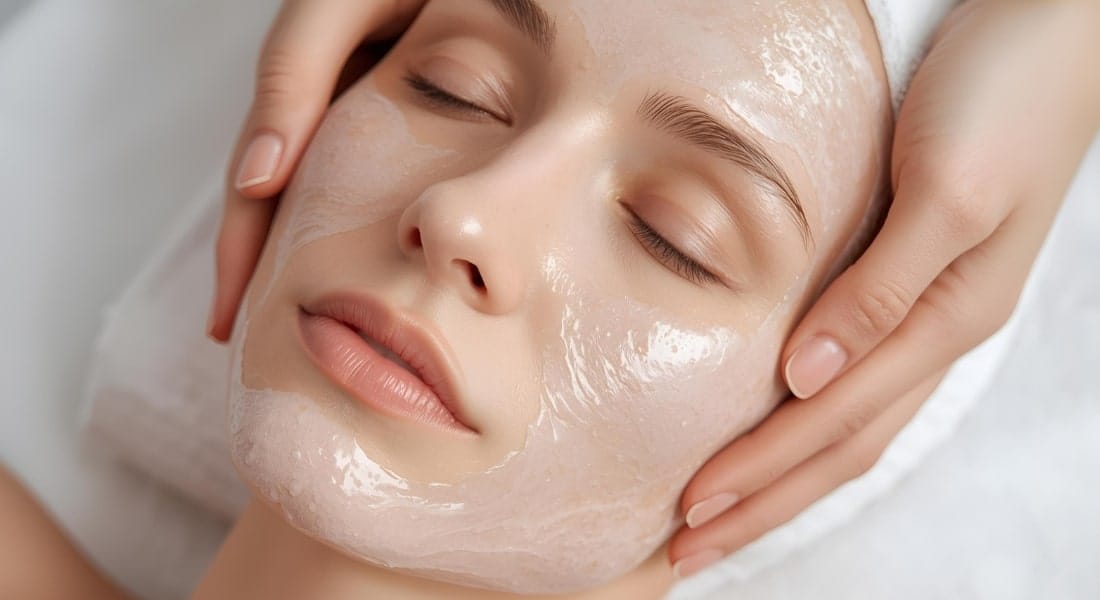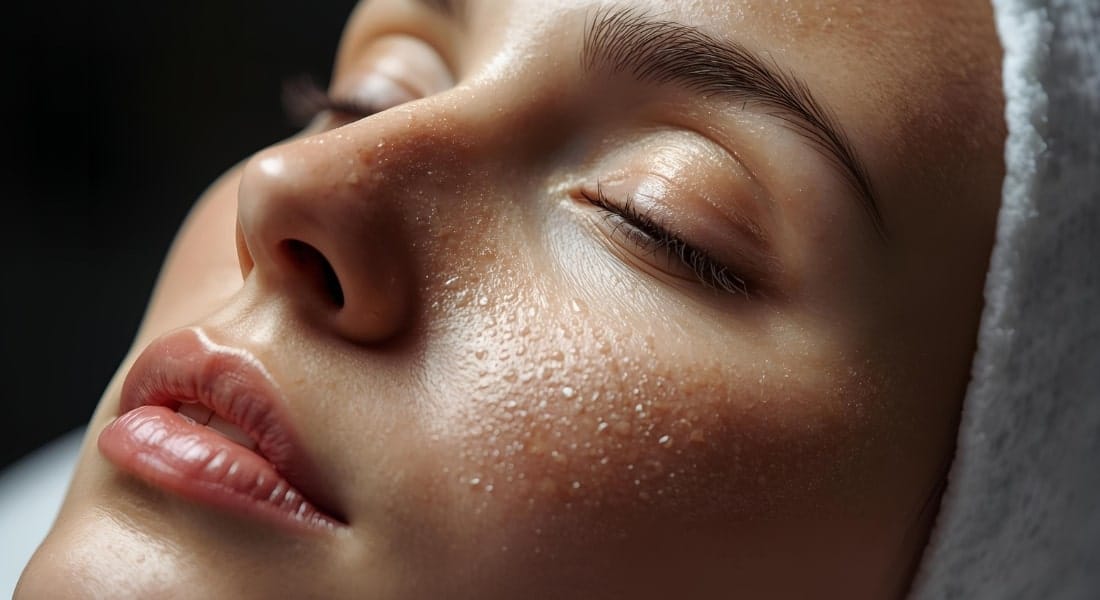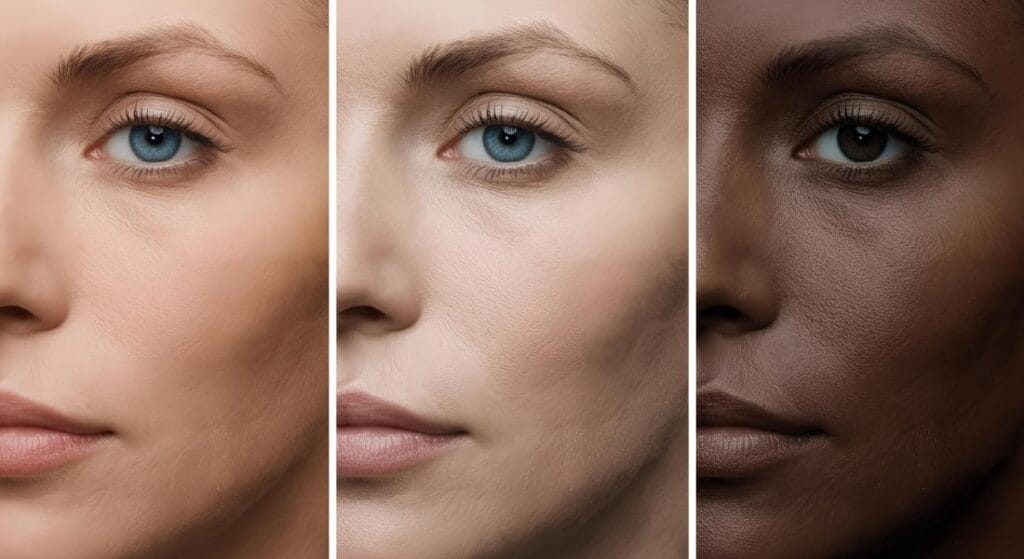Chemical peels have long been a cornerstone of dermatological and aesthetic practice, revered for their ability to effectively address a vast spectrum of skin concerns. From correcting minor texture irregularities to reversing the signs of severe photoaging, these dermatological treatments offer a versatile and powerful solution for skin resurfacing. The efficacy and safety of a chemical peel treatment, however, are intrinsically linked to one critical factor: peel depth.
Understanding the depth of a peel is not merely an academic exercise; it is the fundamental principle that guides a practitioner in selecting the most appropriate agent and concentration for a patient’s specific needs. The three primary categories—superficial, medium, and deep peels—each correspond to a distinct level of tissue penetration, from the outermost layer of the epidermis to the deeper layers of the dermis. This article provides a comprehensive guide for medical professionals, navigating the science, applications, and nuances of each peel depth to ensure safe, predictable, and optimal results for every patient.
Superficial Peels: Gentle Exfoliation for Skin Perfection
Superficial peels are the most gentle category of chemical peels, designed to affect only the epidermis, the outermost layer of the skin. They are an excellent choice for patients seeking mild epidermal exfoliation with minimal downtime, making them a popular “lunchtime” procedure. These peels are primarily used to treat mild skin concerns and are suitable for a wide range of skin types.
Common agents used in superficial peels are typically alpha hydroxy acids (AHAs) and beta hydroxy acids (BHAs).
- Alpha Hydroxy Acids (AHAs): These are water-soluble acids that work by dissolving the bonds between dead skin cells, promoting a smoother, brighter complexion. Glycolic acid and lactic acid are the most well-known examples.
- Glycolic Acid Peel: Derived from sugarcane, glycolic acid has the smallest molecular size among AHAs, allowing for effective penetration and exfoliation. It is widely used for improving skin texture improvement, reducing fine lines, and enhancing overall skin luminosity. Aakaar Medical Technologies Ltd offers the Theraderm Glycolic Acid Peel, a professional-grade solution formulated to provide effective yet gentle skin renewal.
- Lactic Acid Peel: Derived from sour milk, lactic acid is a larger molecule and is known for its hydrating properties. It is an excellent choice for patients with sensitive or dry skin, as it provides gentle exfoliation while drawing moisture to the skin. This peel is effective in treating mild pigmentation and improving hydration. Aakaar’s Theraderm Lactic Acid Peel is a testament to this, providing gentle exfoliation and a radiant glow without significant irritation.
- Other Agents: Salicylic acid (a BHA) is another common superficial peel agent, particularly effective for acne-prone skin due to its ability to penetrate and dissolve oil within the pores. Mandelic acid is another AHA derived from bitter almonds, known for its gentle action and suitability for darker skin tones.
The key benefits of superficial peels include their safety profile, minimal to no downtime, and the ability to be performed in a series to achieve cumulative results. They are ideal for treating mild photoaging, uneven skin pigmentation, and dull complexion.
Medium Peels: Targeting the Epidermis and Upper Dermis
Medium-depth peels represent a significant step up from their superficial counterparts. These peels are formulated to penetrate deeper, affecting the entire epidermis and reaching into the papillary dermis. This deeper penetration allows for the treatment of more pronounced skin concerns, such as moderate sun damage, deeper fine lines, and stubborn pigmentation.

The gold standard for medium-depth peels is Trichloroacetic Acid (TCA), typically used in concentrations ranging from 15% to 35%. The concentration determines the peel’s depth; a 15% TCA may act as a superficial peel, while a 35% concentration can achieve a medium depth.
- Trichloroacetic Acid (TCA) Peel: TCA works by causing a controlled protein coagulation (frosting) in the skin, leading to more significant epidermal exfoliation and dermal remodeling. The controlled wound healing response that follows stimulates fibroblast activity and collagen stimulation, resulting in a firmer, smoother, and more even complexion.
- Modified Jessner’s Solution: This is another popular medium-depth peel, a combination of salicylic acid, lactic acid, and resorcinol in an ethanol base.
The benefits of a medium peel are substantial, including noticeable improvement in skin texture, a reduction in the appearance of acne scars and age spots, and the softening of fine lines and wrinkles. However, these benefits come with a longer recovery time, typically 5 to 7 days, during which the patient will experience significant peeling and redness. The risk profile is also higher, requiring careful patient selection and post-peel care to prevent complications like hyperpigmentation.
Aakaar Medical Technologies Ltd offers innovative solutions that can achieve a similar effect to medium peels with a unique approach:
- INNO EXFO LIGHTENING CREAM: This product, also known as a Yellow Peel or Retinol Peel, uses a powerful blend of Vitamin A derivatives, salicylic acid, and phytic acid to create a professional-grade peel. It targets moderate photoaging and hyperpigmentation, offering significant skin lightening and rejuvenation with a controlled, lighter peeling process. The peel works on multiple layers, providing a powerful synergistic effect on epidermal melanotic pigmentation and fine lines.
- BLACK PEEL Exo Resurfacing: This peel is formulated with Black Acetic Acid and Bio Sulphur, which provides a resurfacing effect with a focus on treating active acne, blackheads, and oily skin. While categorized differently, its depth of action and ability to promote significant skin renewal and healing make it an excellent choice for practitioners looking to address these specific concerns. The controlled exfoliation and anti-inflammatory properties of this peel provide a powerful alternative to traditional TCA medium peels for acne-prone patients.
Deep Peels: The Ultimate Skin Rejuvenation
Deep peels are the most intensive and transformative of all chemical peels. They are reserved for treating severe skin conditions, including deep wrinkles, significant sun damage, precancerous growths, and extensive acne scars. These peels penetrate through the epidermis and dermis, reaching the mid-reticular dermis.

The primary agent for a deep peel is phenol, a highly potent chemical that must be administered under strict medical supervision, often in a surgical setting.
- Phenol Peel: Phenol works by denaturing protein throughout the dermal layers, leading to a significant dermal remodeling response. This intense process triggers a powerful wound-healing cascade, leading to the formation of new, healthy collagen and a remarkable improvement in skin laxity, texture, and deep lines.
The benefits of a deep peel are unparalleled, offering a near-permanent solution for severe skin issues. However, the risks are also substantial, including prolonged recovery times (weeks to months), a permanent lightening of the skin, and potential cardiac, hepatic, and renal toxicity. Consequently, these peels are performed only on a select group of patients and require extensive pre-peel preparation and post-peel care.
While Aakaar Medical Technologies Ltd does not offer a traditional phenol peel, they provide advanced, regenerative solutions that offer a path to skin rejuvenation with a different, often safer, mechanism of action. The EXOLUXE: Exosome Medifacial Kit represents a next-generation approach to deep skin repair. This kit leverages the power of exosomes, tiny vesicles that facilitate cell-to-cell communication, to promote significant collagen stimulation and dermal repair from within. While it does not physically peel the skin in the traditional sense, its regenerative effects can produce transformative results, particularly in dermal remodeling and improving overall skin health, offering an alternative for practitioners seeking to provide intensive rejuvenation without the significant risks and downtime of a traditional deep peel.
Choosing the Right Peel Depth: A Professional’s Guide
Selecting the appropriate peel depth is a decision that requires a meticulous skin assessment and a thorough understanding of the patient’s goals and expectations. This process is far more nuanced than simply choosing a product; it is a clinical art guided by science.
- Patient Consultation: The journey begins with a detailed consultation. Practitioners must assess the patient’s skin type (e.g., Fitzpatrick scale), identify their primary concerns (e.g., fine lines vs. deep wrinkles), and discuss their desired outcome and tolerance for downtime.
- Skin Condition Assessment: A close examination of the skin’s surface and underlying structures is crucial. Is the concern primarily skin pigmentation, fine lines, or is it extensive photoaging? This guides the choice between a superficial, medium, or deep approach.
- Matching Peel to Concern:
- Superficial Peels are ideal for patients seeking a quick refresh, a glow, or a solution for mild concerns like mild sun damage and textural issues. They are excellent for maintenance and can be a gateway to more advanced treatments. Aakaar’s glycolic acid peel and lactic acid peel are perfectly suited for this category.
- Medium Peels are for those with more pronounced issues who are willing to accept a few days of downtime for significant results. They are the workhorse of aesthetic practices for acne scars, more severe pigmentation, and deeper wrinkles. Products like Aakaar’s INNO EXFO LIGHTENING CREAM and BLACK PEEL Exo Resurfacing provide professional-grade solutions for these indications.
- Deep Peels are reserved for patients with severe cosmetic or medical concerns. They are a one-time treatment that provides dramatic, long-lasting results. Aakaar’s EXOLUXE: Exosome Medifacial Kit offers an innovative, non-ablative alternative for deep regeneration and dermal remodeling.
The Aakaar Medical Technologies Ltd product line is designed to support practitioners in every facet of their practice, offering clinically-proven solutions that align with each of the three peel depths. This comprehensive approach allows clinicians to provide tailored treatments that meet the unique needs of every patient, from mild exfoliation to profound rejuvenation.
Conclusion

The world of chemical peels is defined by its ability to deliver transformative results, but the true mark of a skilled practitioner lies in their ability to master the concept of peel depth. Superficial, medium, and deep peels each serve a distinct purpose, offering a tiered approach to skin rejuvenation that must be navigated with precision and expertise.
A thorough understanding of the agents, applications, and risks associated with each depth is paramount to achieving optimal results and ensuring patient safety. Aakaar Medical Technologies Ltd is committed to empowering medical professionals with a comprehensive range of professional peels and advanced regenerative solutions, from the gentle Theraderm AHA Kojic Acid Peel to the innovative EXOLUXE: Exosome Medifacial Kit. By exploring Aakaar’s specialized offerings, you can provide tailored dermatological solutions that cater to every skin need, from subtle skin texture improvement to dramatic dermal remodeling.

